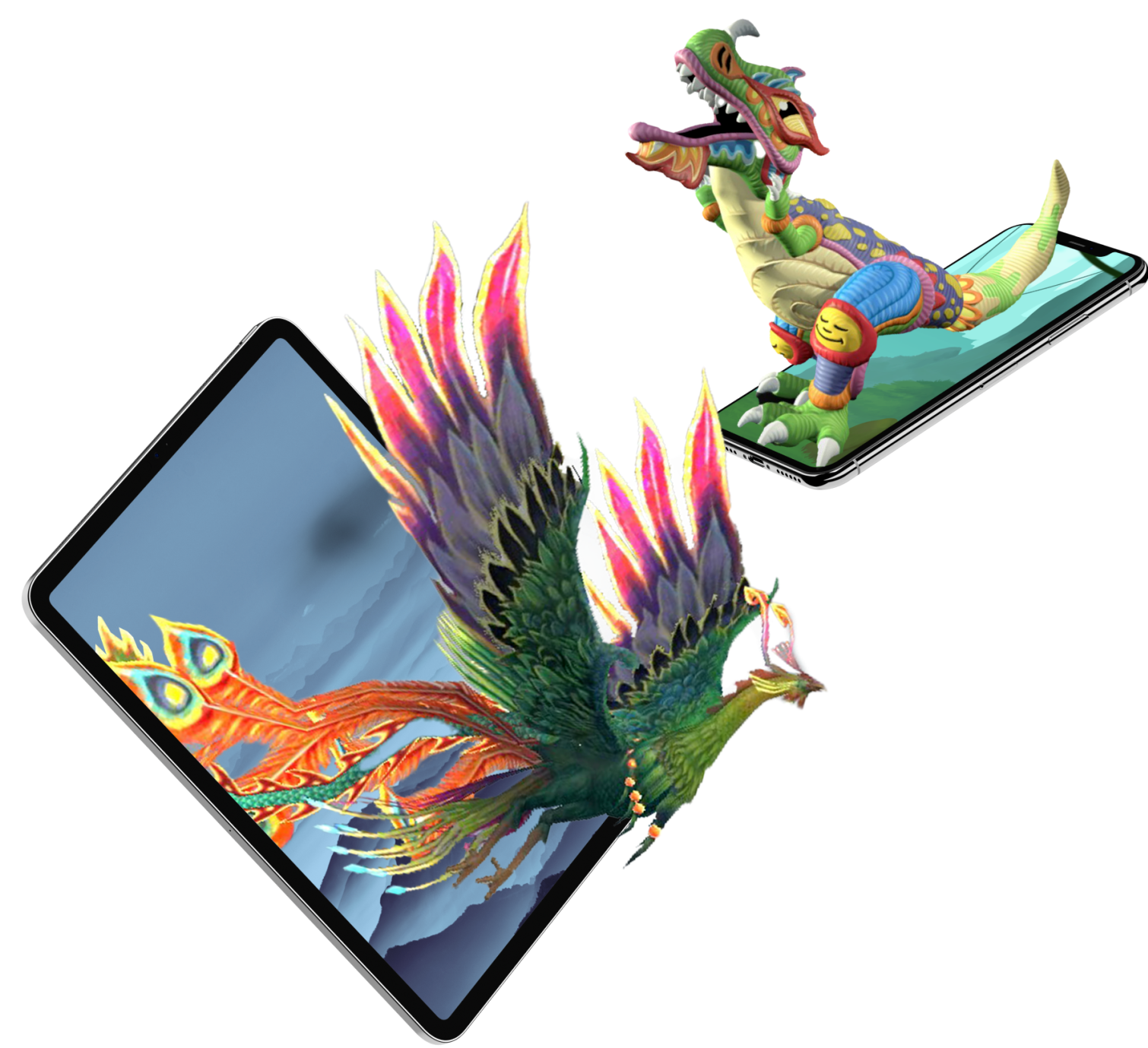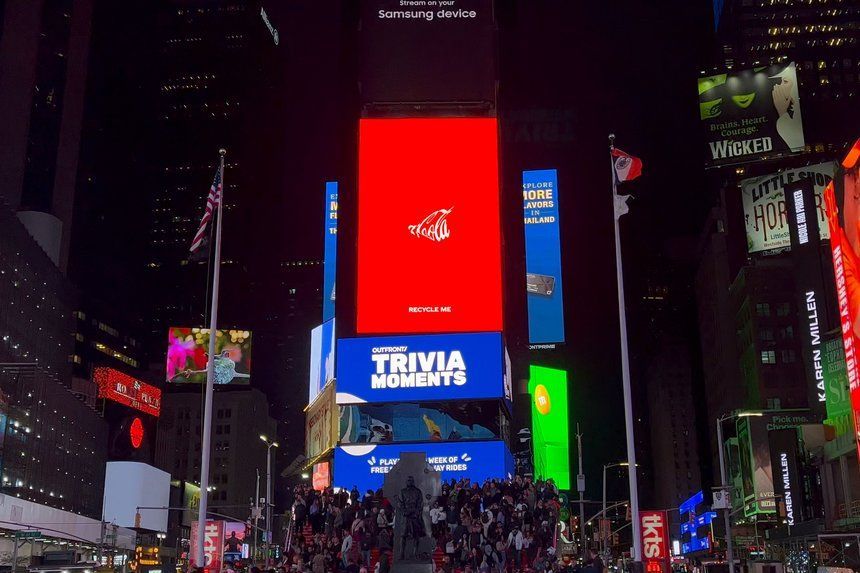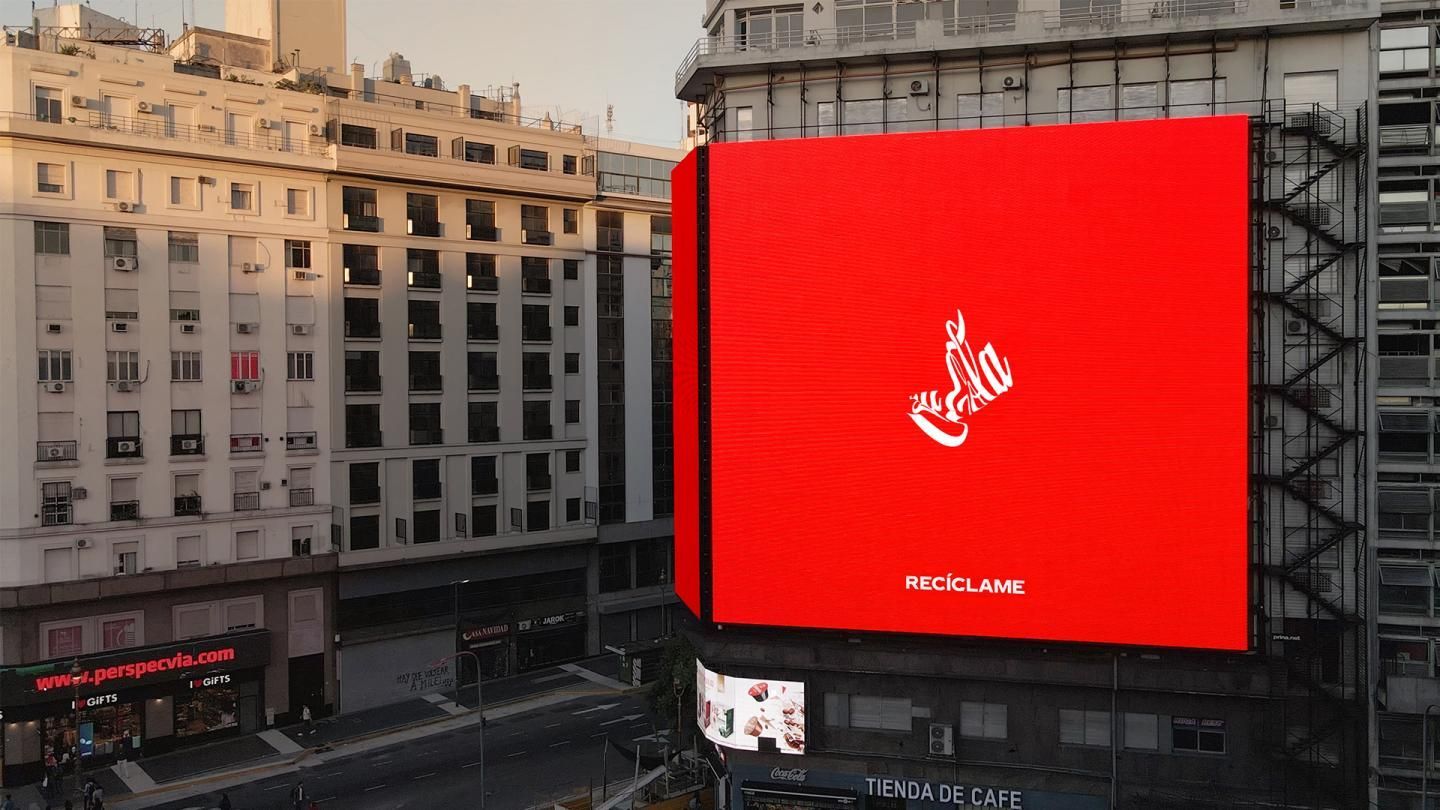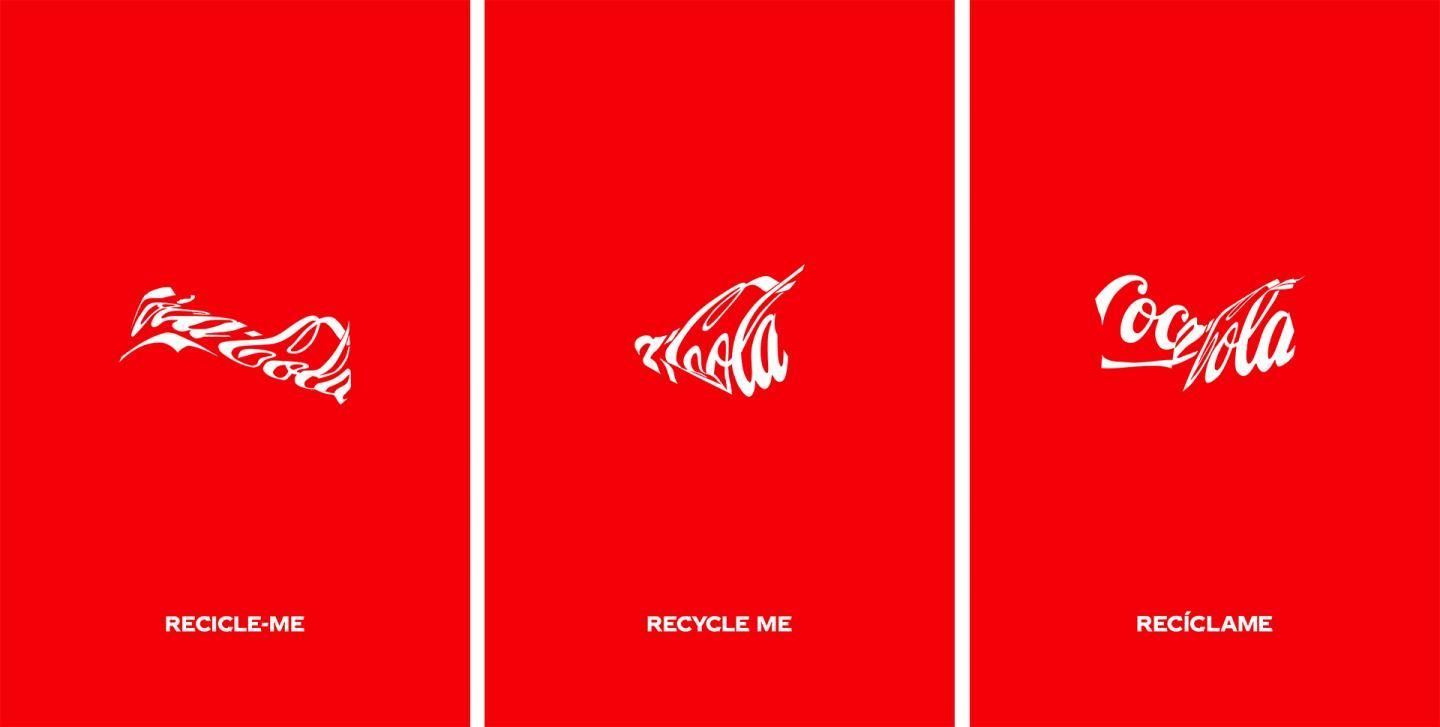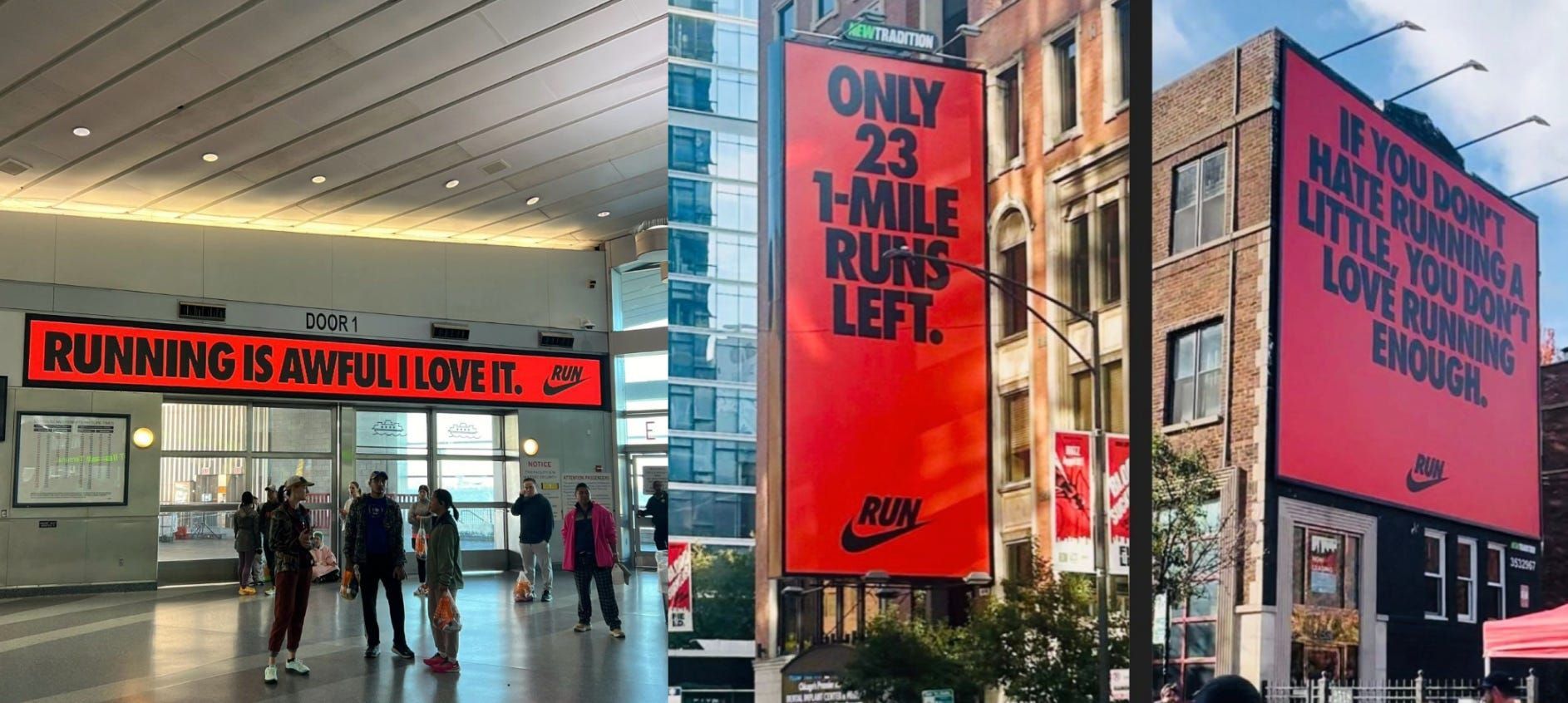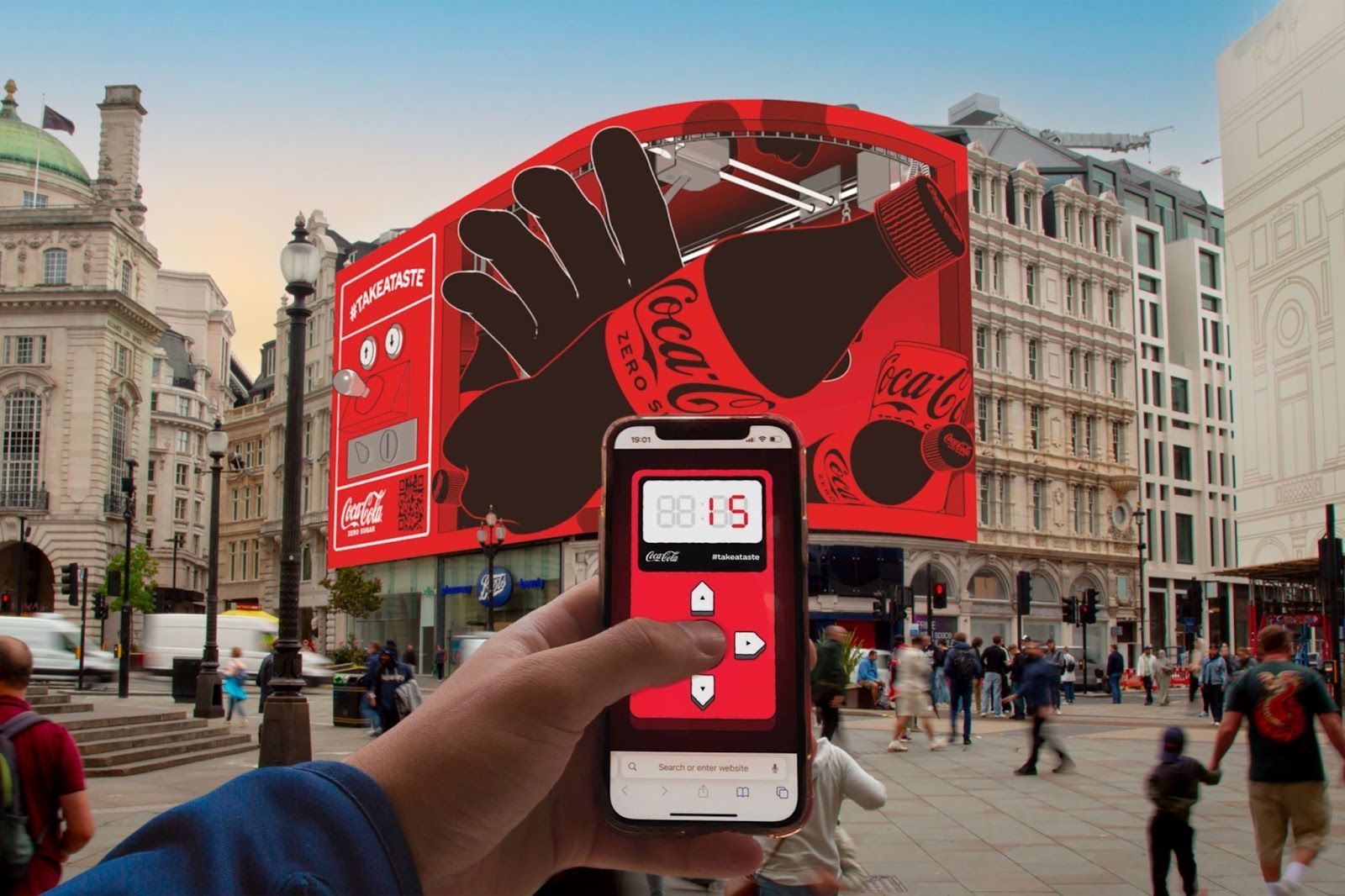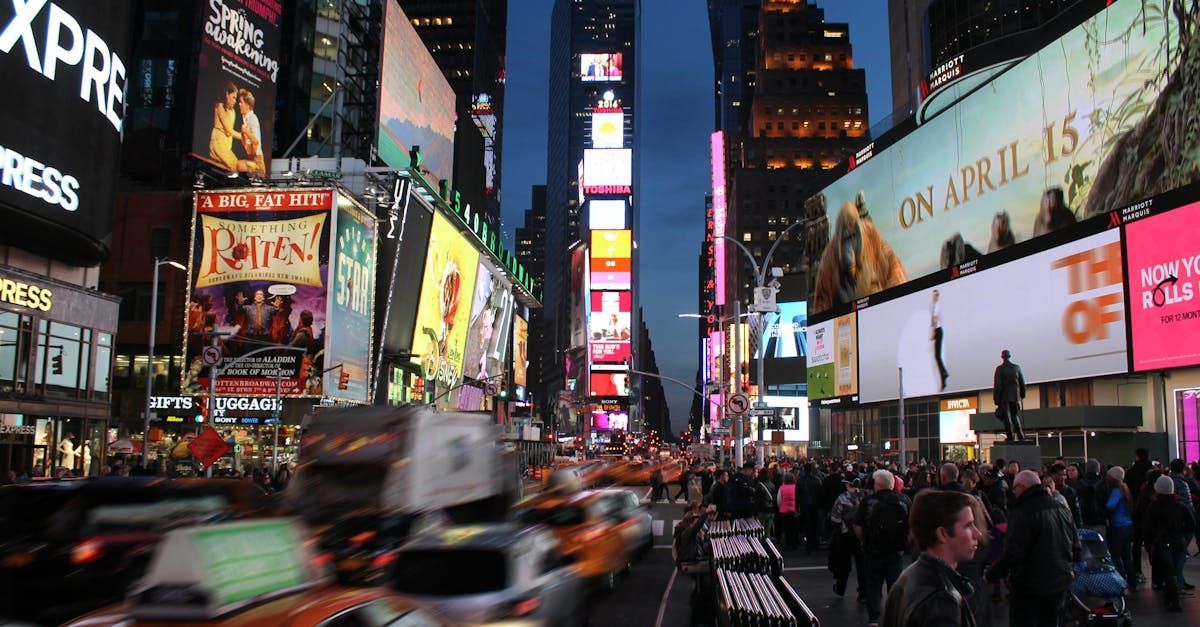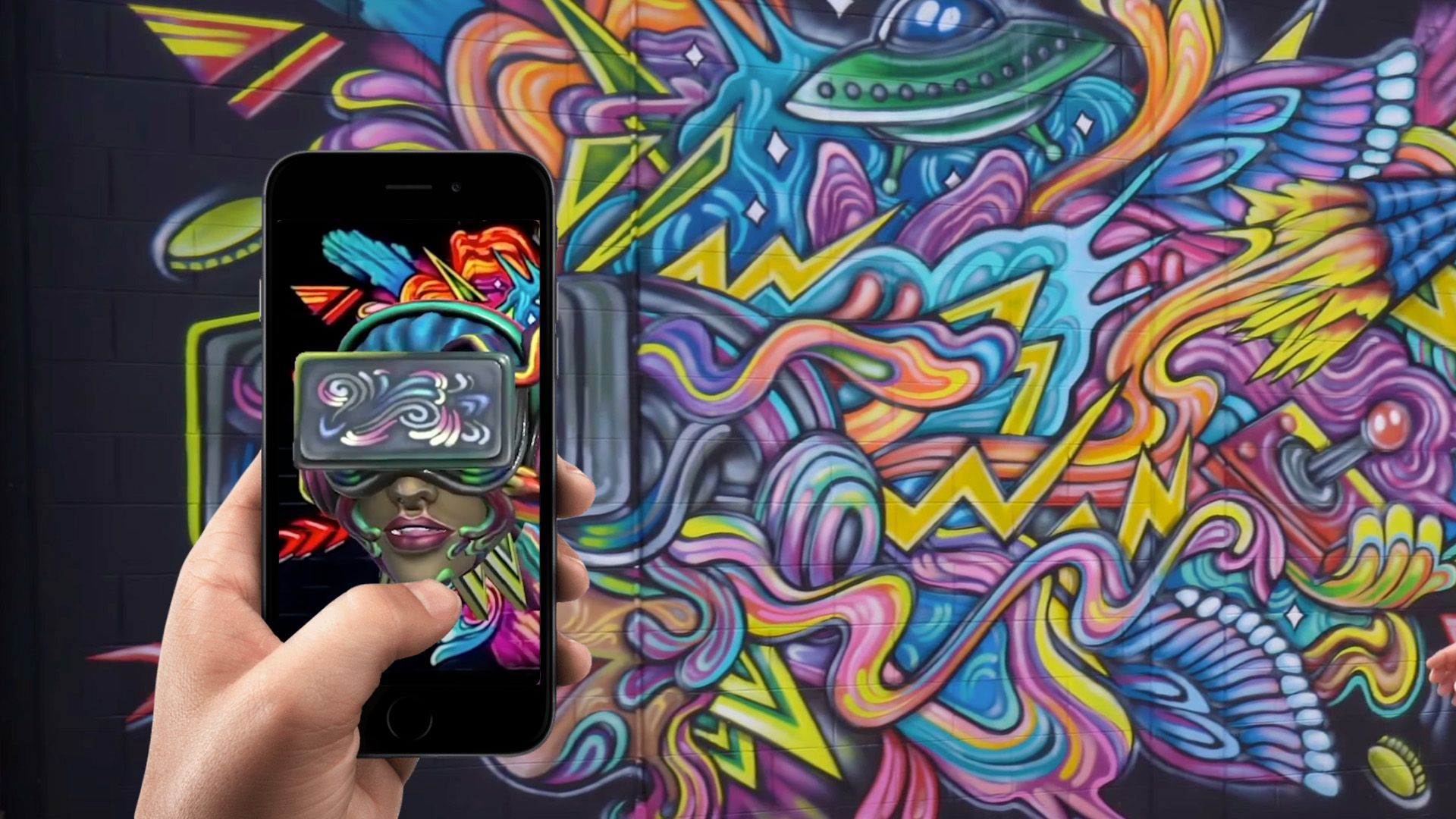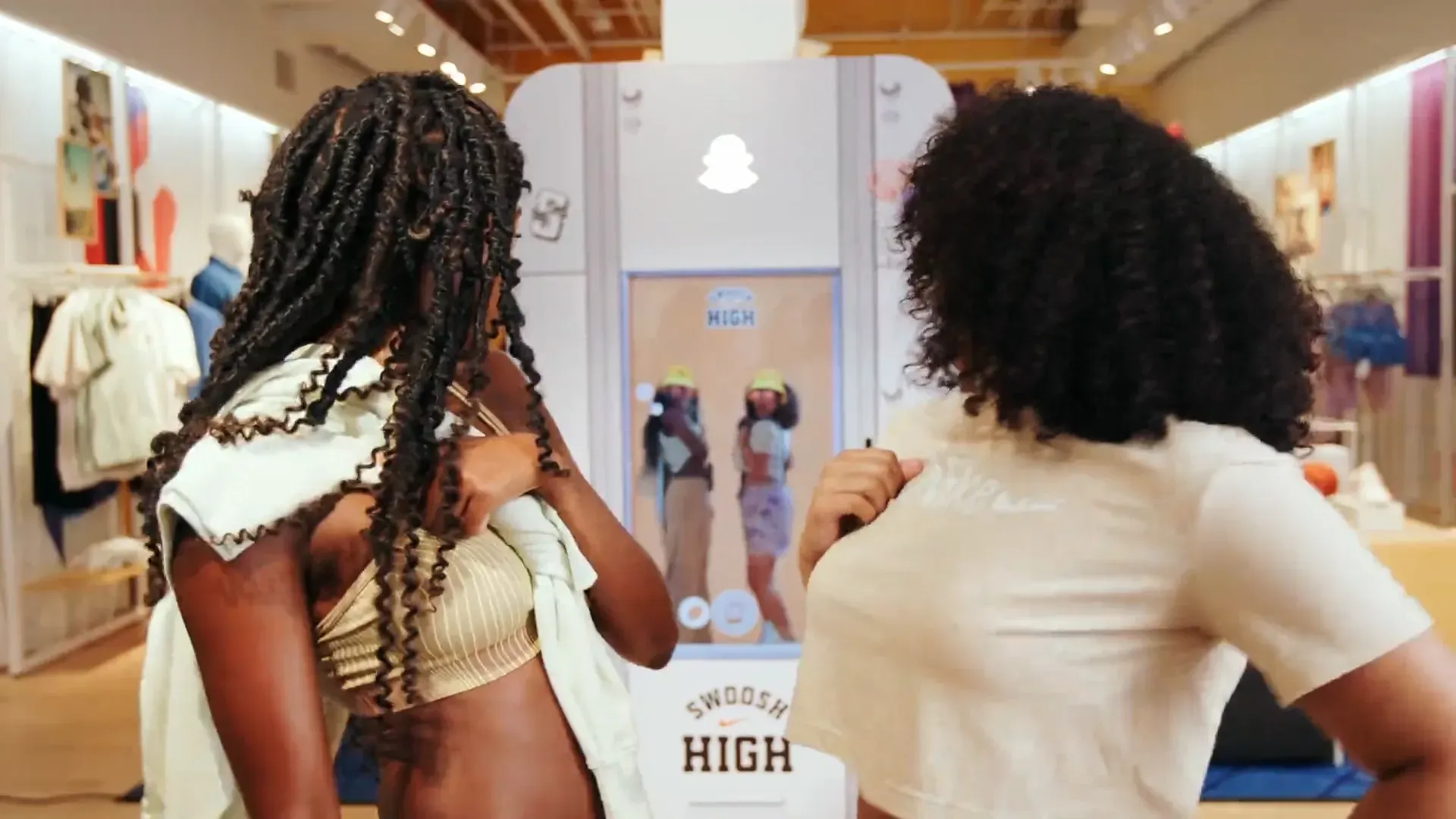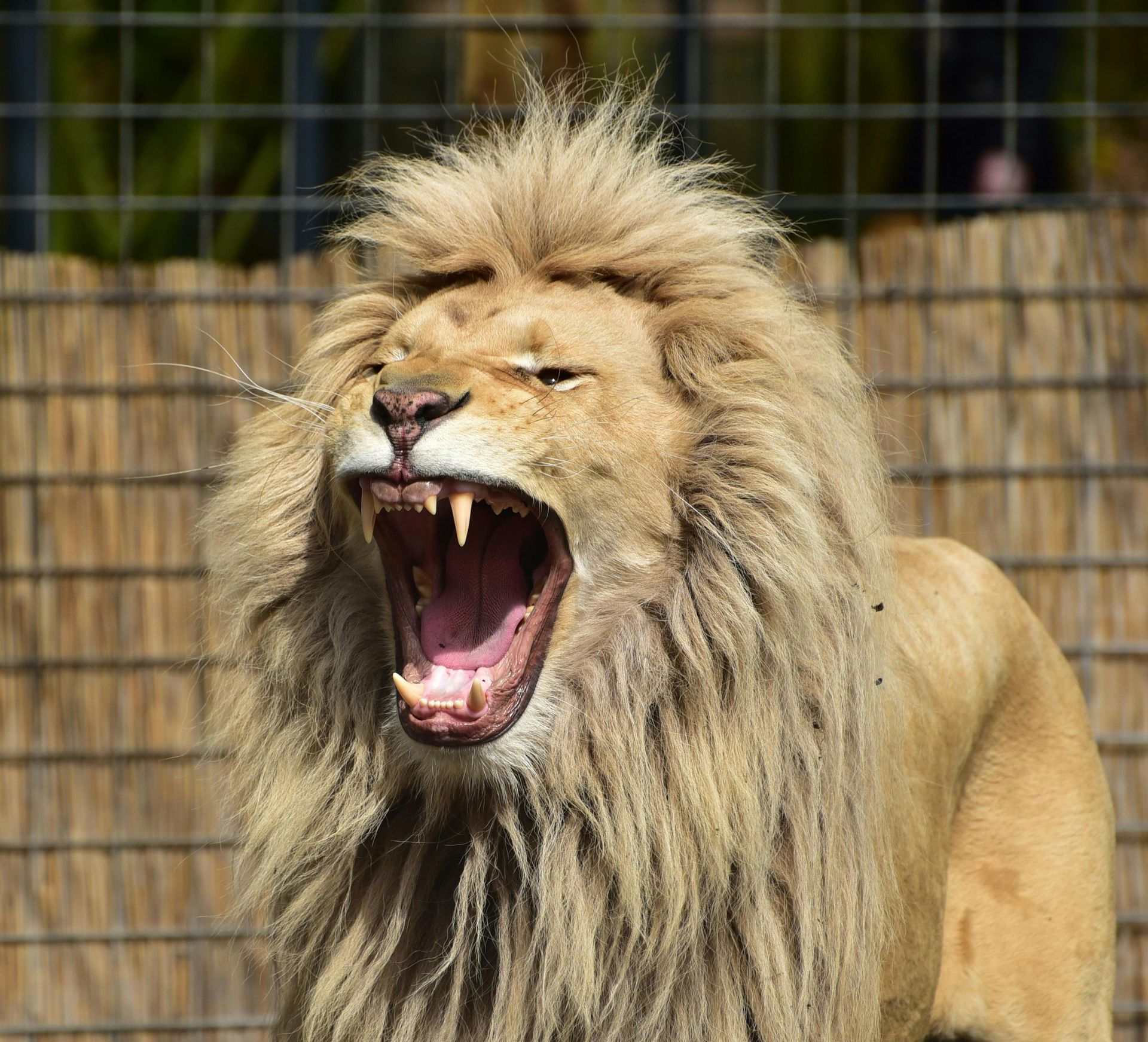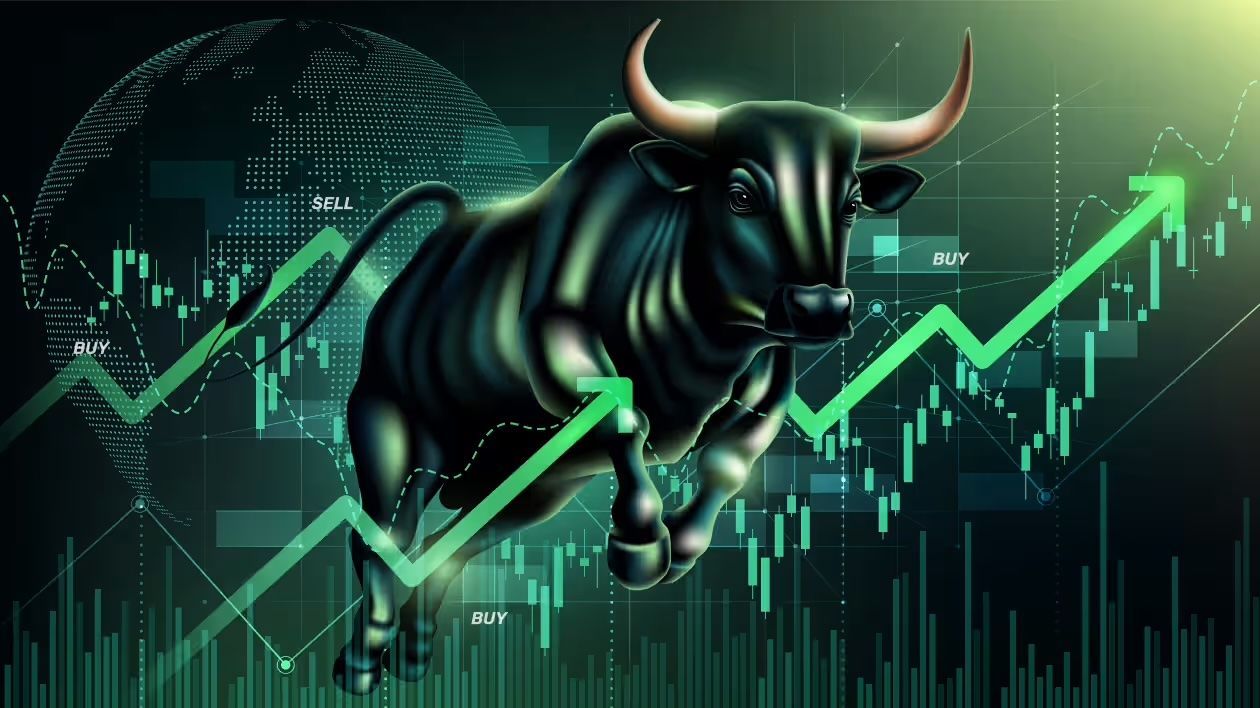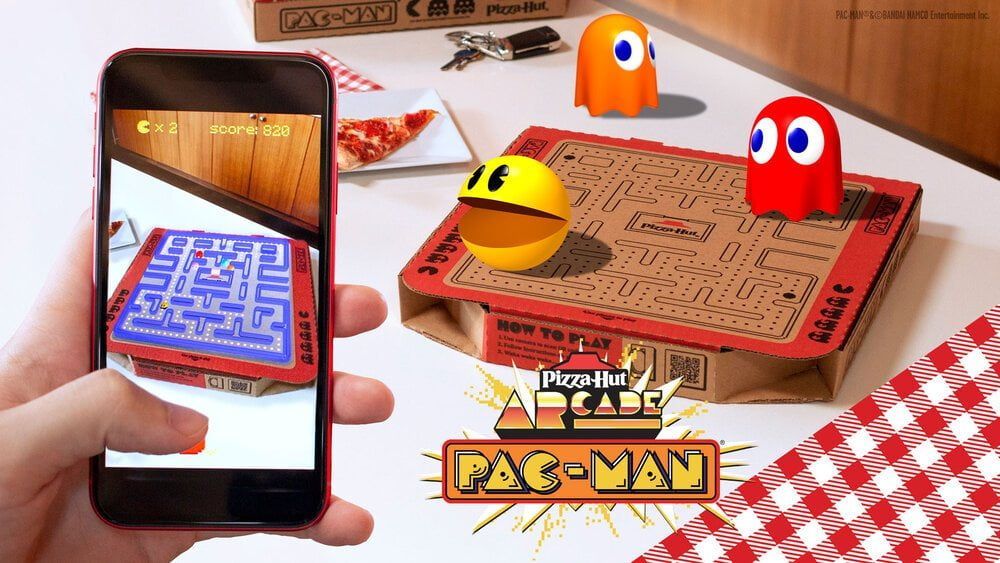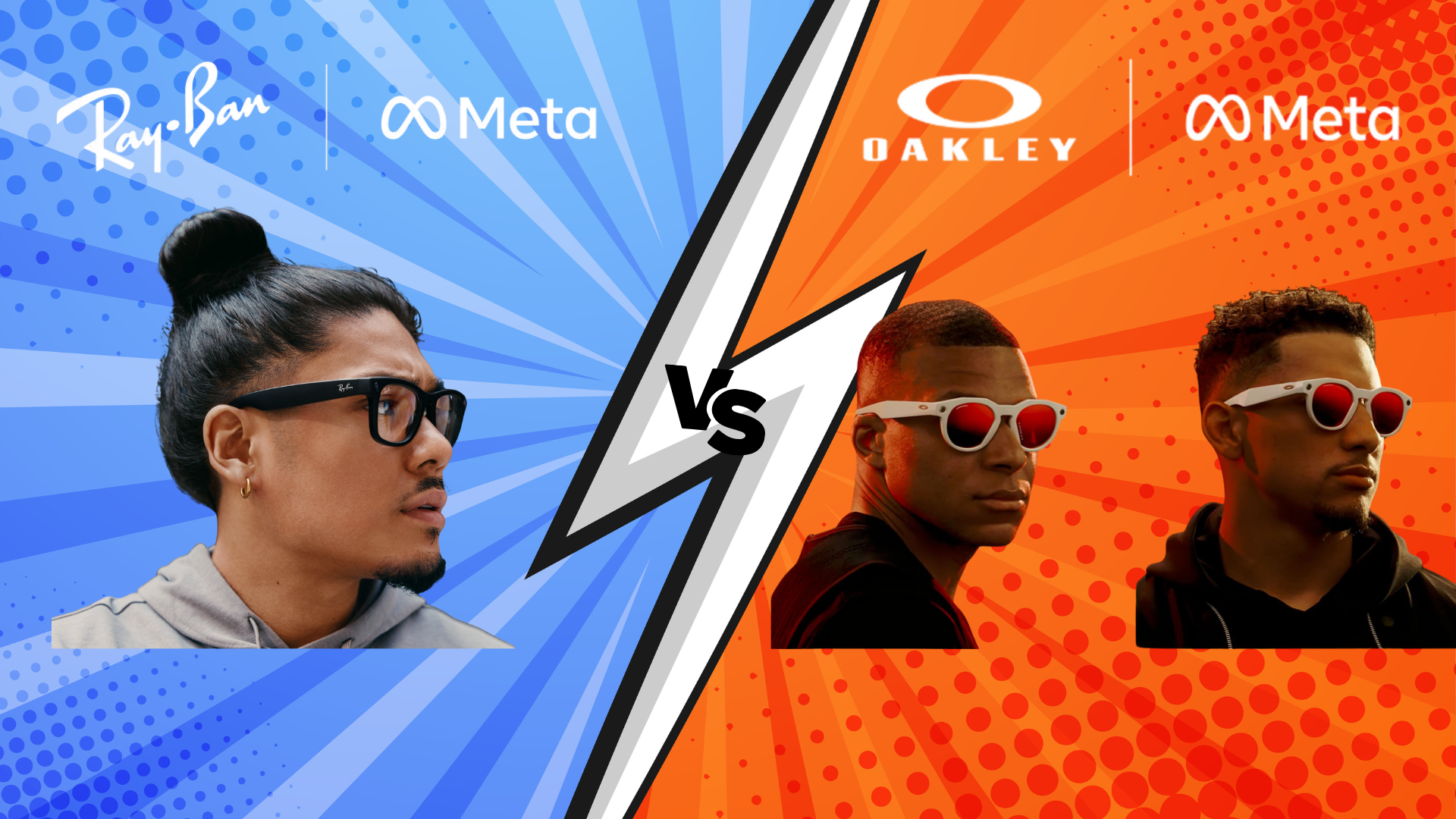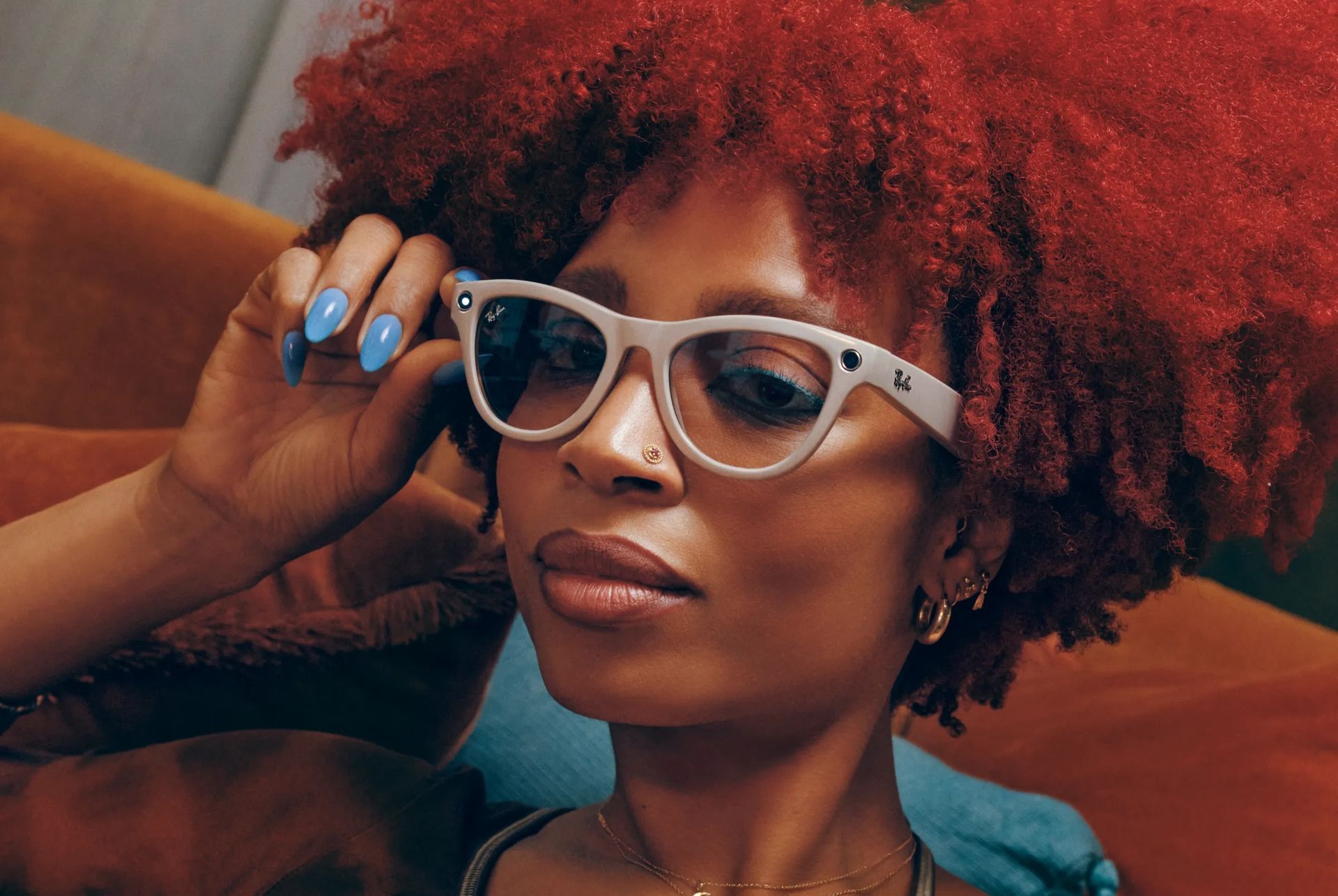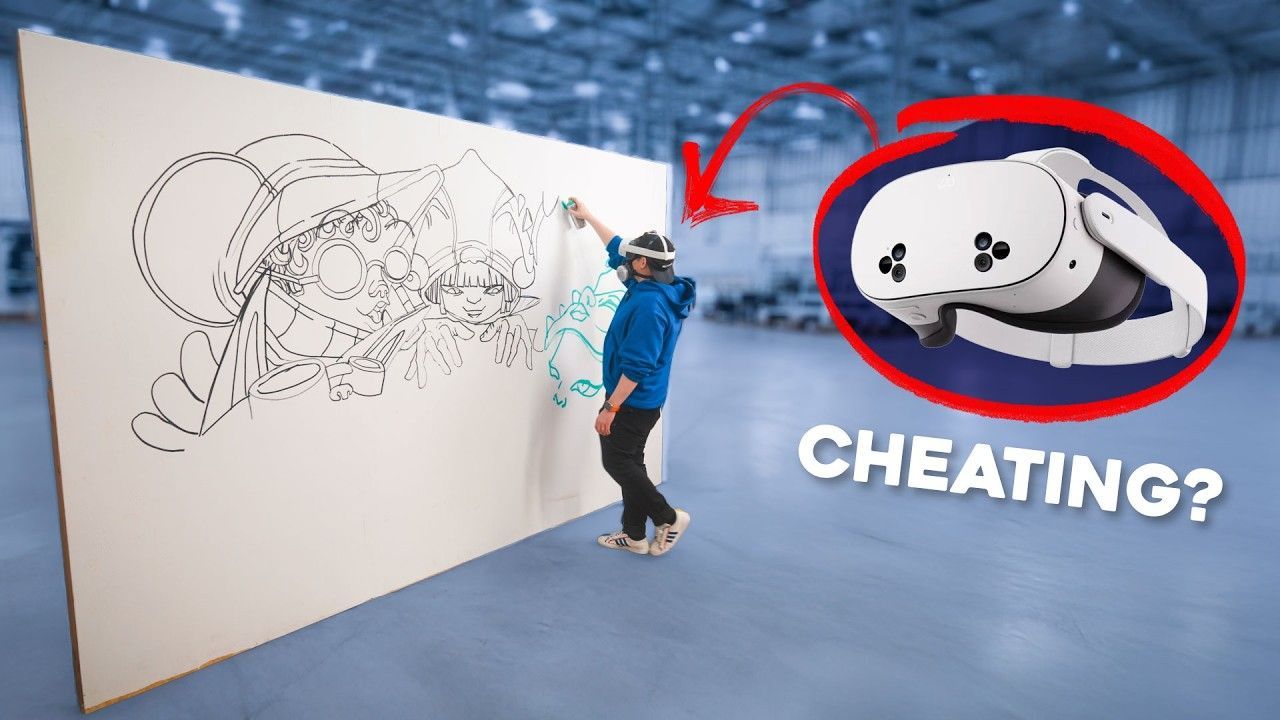25 Best Billboard Campaigns of 2025
2025 was a blockbuster year for out-of-home advertising, with billboards reimagined as immersive brand experiences. From classic static signs to anamorphic 3D displays and interactive AR billboards, top brands pushed creative boundaries to captivate audiences. Below we list 25 of the year’s most memorable U.S. billboard campaigns – spanning Fortune 500 heavyweights and viral sensations – and unpack why each knocked it out of the park (often winning awards or lighting up social media in the process). Enjoy this list of 2025’s best billboards, curated especially for OOH marketing pros!
1. Coca-Cola – “Recycle Me” Sustainability Billboards
Coca-Cola received top recognition for “Recycle Me,” a bold, eco-friendly campaign that literally crushed its own logo. Each billboard displayed the Coca-Cola script logo resembling a crushed Coke can, alongside the words “Recycle Me,” to remind viewers to recycle their empties. This simple yet striking visual made recycling a key part of the Coca-Cola experience, supporting the company’s global goal for 100% recyclable packaging by 2025.
Why it’s notable: It won the 2025 OBIE Platinum Award for its creative clarity and purpose. It also created positive buzz by demonstrating that even an iconic brand image can be playfully challenged to support a cause – a refreshing twist that sparked conversations (and hopefully encouraged recycling).
2. e.l.f. Beauty – “So Many Dicks” Boardroom Diversity Campaign
Never one to shy away from cheeky humor, e.l.f. Cosmetics sparked conversations with out-of-home ads bluntly declaring “So many Dicks, so few of everyone else.” The beauty brand placed this slogan across digital billboards in New York’s Financial District (near Wall Street) to highlight the shortage of women and minorities on corporate boards. (The joke: there are literally more men named “Dick” than women or minorities leading U.S. companies!) The campaign, part of e.l.f.’s “Change the Board Game” initiative, was supported by eye-opening stats— for example, 566 board members are named Richard/Rick/Dick, far outnumbering Black, Asian, Hispanic, Middle Eastern, or Native American women in those roles.
Why it’s notable: “So Many Dicks” grabbed people's attention with its edgy copy and honesty. It went
viral on social media and even won a
2025 OBIE
Award for its buzzworthy impact. By using humor to promote diversity, e.l.f. showed that cause marketing can be bold, clever, and effective in driving change.
3. Nike – Dodgers “Roll Call” Championship Tribute
Nike celebrated the L.A. Dodgers’ championship victory in cinematic style by illuminating the Hollywood Sign. After the Dodgers won the World Series, Nike lit up the letter “D” in Dodger blue, turning the landmark into a victory billboard. This stunt, paired with Nike’s viral “Roll Call” ad (which rolled credits listing the team roster under “Just Do It”), blurred the lines between advertising and a city-wide celebration.
Why it’s notable: By hacking an icon of Los Angeles, Nike’s tribute
caught the attention of millions and showed how OOH can connect with cultural moments. It demonstrated the power of outdoor advertising to create an emotional,
citywide bond during a historic sports event – all while subtly keeping Nike’s brand at the core of the story.
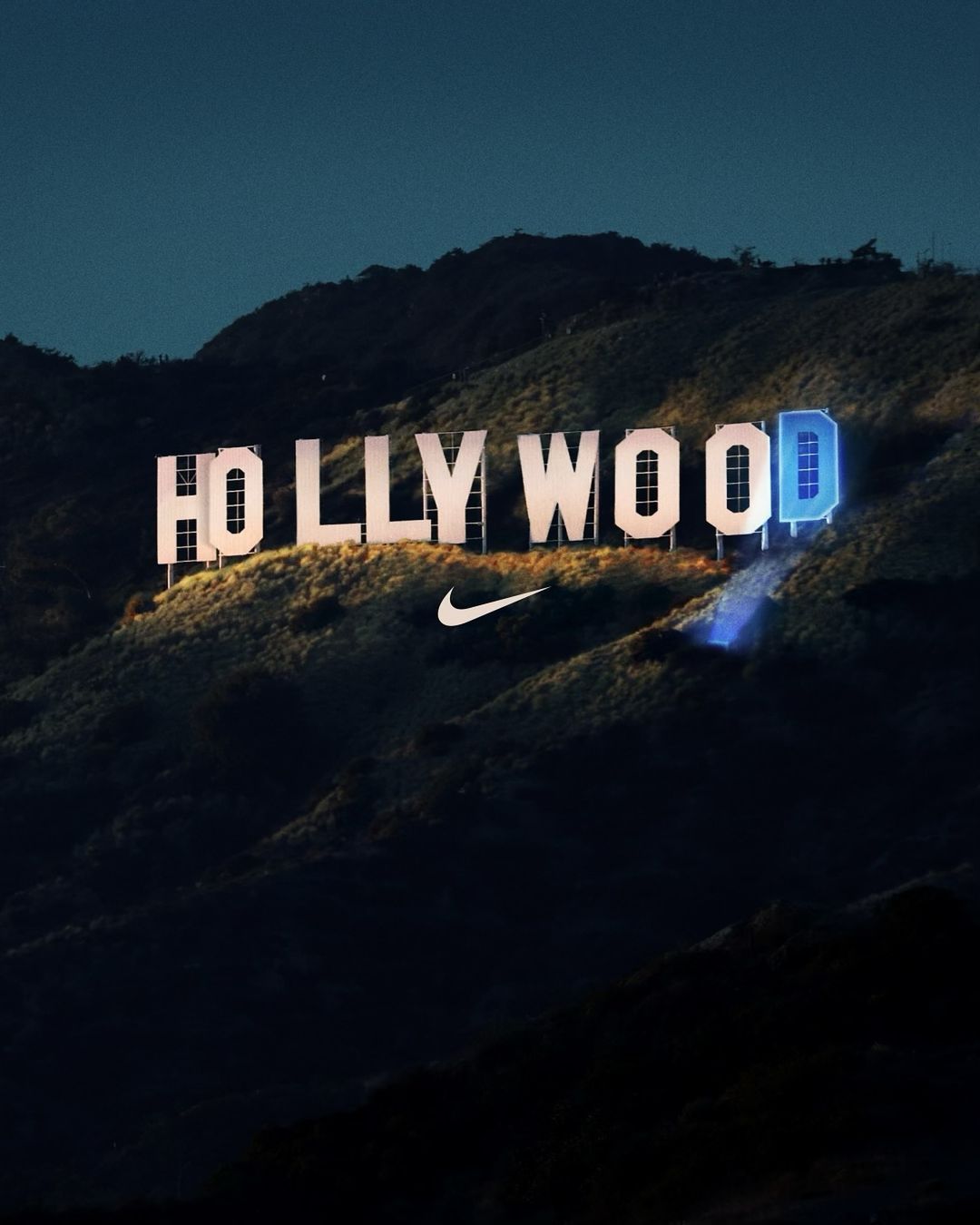
4. Nike – “Run” NYC Marathon Takeover
When it comes to guerrilla marketing, Nike just does it. In 2024’s NYC Marathon (whose effects carried into 2025), Nike wasn’t an official sponsor — but that didn’t stop them from dominating the race with a clever OOH blitz. They secured prime billboards and posters along the marathon route, all featuring a giant Nike Swoosh and one simple word: “Run.” Nike’s copywriters also motivated runners with humorously relatable lines like “Running is awful. I love it.” and “You’ve come hundreds of miles to get here. Only 26.2 to go.” These minimal yet impactful ads spoke directly to the marathoner mindset.
Why it’s notable: Nike’s ambush marketing outshined the official sponsor, showing that
emotional
connection surpasses bland promotion. Runners and spectators shared clever signs on social media, giving Nike a victory lap in brand goodwill without an official sponsorship. It’s a masterclass in how a well-placed, well-timed billboard can embody
the
spirit of an event.
5. Verizon's Miami AR Mural Storefronts
Platform: Snapchat Location-Based AR Lens
Results: 657.3K total plays, 670.8K total views, over 1k social posts, peak single-day performance of 4k plays
Verizon activated three AR murals across Miami storefronts (Midtown Miami, Hialeah, and Coconut Grove) during Art Basel, combining local artist collaborations with location-triggered AR experiences. Each mural was painted by neighborhood artists and brought to life through immersive AR animations when users pointed their phones at the physical artwork.
Key Success Factors:
- Strategic timing with Art Basel to capture thousands of art enthusiasts
- Location-based AR triggers requiring physical store visits for activation
- Authentic local artist partnerships creating neighborhood-specific cultural relevance
- Social sharing mechanics driving viral amplification
- Cross-cultural community engagement across diverse Miami neighborhoods
Business Impact: Demonstrated how AR can strengthen local community ties while driving measurable foot traffic. The campaign became a "must-see attraction" during Art Basel, positioning Verizon as culturally connected to Miami's diverse communities. Strong social sharing metrics created organic reach amplification, while location-based triggers ensured direct store engagement and brand visibility in key Miami markets.
6. ABC Entertainment – Abbott Elementary’s 3D Diorama Billboard
Who says school can’t be fun? To promote Season 4 of the hit sitcom Abbott Elementary, ABC created a showstopping 3D diorama billboard on a Los Angeles wall. The installation featured oversized, three-dimensional classroom props and characters popping out of the billboard, as if the adorable chaos of Abbott Elementary couldn’t be contained on a flat surface. This custom-built display earned a Gold OBIE Award for Custom Installation, impressing the OOH industry with its stunning craftsmanship.
Why it’s notable: In an age dominated by CGI and digital screens, this campaign took an
analog approach by hand-crafting real 3D elements for a tactile visual impact. It blurred the line between a billboard and an art installation, giving fans a reason to take photos. The buzz helped Abbott Elementary’s new season stand out in a crowded fall TV lineup, showing that a well-executed out-of-home campaign can become a
mini landmark on its own.
7. ESPN & NFL – Anamorphic 3D Football Fever
Sports advertising leveled up with an anamorphic 3D billboard that had NFL fans doing double-takes. To reveal the 2024 season’s division champions, ESPN partnered with BCN Visuals on a massive 3D motion display in downtown Los Angeles. Spectators saw giant footballs and helmets seemingly flying out of a futuristic Tron-like maze on the side of a hotel. Team logos and highlights burst into action, transforming an ordinary facade into an unforgettable visual experience.
Why it’s notable: This campaign created the
wow factor. Videos of the 3D billboard went viral among sports fans, seamlessly blending technology, entertainment, and hype. It demonstrated that high-impact digital OOH can generate as much excitement as a touchdown – and indeed, helped build game-day buzz in the lead-up to the NFL playoffs. For many, this was the first time a billboard felt like a
live event.
8. Paramount Pictures – Mean Girls “Look Both Ways, Regina”
A California city bus warns Mean Girls’ Regina George to “Look both ways” – a cheeky viral ad for the new Mean Girls movie.
Mean Girls may be a 2000s classic, but Paramount’s 2024 marketing for the new
Mean Girls musical
movie was totally fetch. They rolled out hot-pink ads on buses across California with the phrase
“Look
Both Ways, Regina” scrawled in lipstick handwriting. It’s a clever nod to the iconic scene where Regina George (spoiler!) gets hit by a bus – now, the
bus itself delivers the punchline. Additionally, bus shelters and subway ads featured other famous lines like “You can’t sit with us.” The out-of-home campaign tapped into nostalgia and had fans laughing.
Why it’s notable: This is a prime example of fan service in outdoor advertising. The reference was immediately recognizable to the target audience and highly
shareable – social media buzzed with photos and tweets of the “Look Both Ways, Regina” buses, which many called genius. By playfully breaking the fourth wall, Paramount generated buzz that boosted movie ticket sales (the film’s opening weekend saw a lift in markets with these ads). It’s an excellent example of using OOH to tap into pop culture memory and spark conversations.
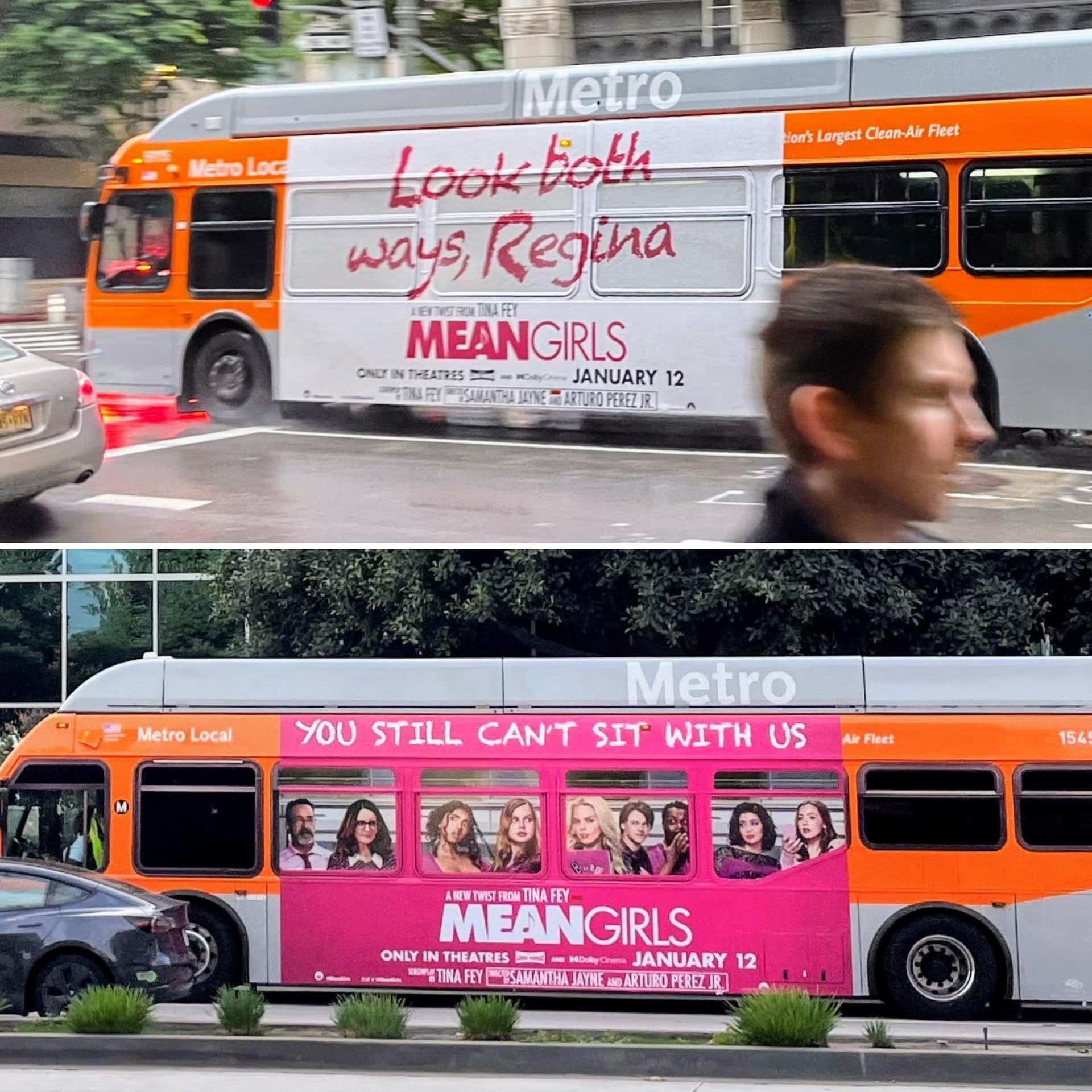
9. Sony Electronics – Olivia Rodrigo Subway Takeover
How do you make a splash in the crowded headphones market? Partner with a pop star and go underground. Sony Electronics teamed up with Gen-Z icon Olivia Rodrigo to promote its LinkBuds earphones through a full NYC subway station takeover. The campaign featured vibrant posters of Olivia and the earbuds on subway walls, turnstiles, and trains, grabbing the attention of commuters in one of the world’s busiest transit systems. Sony wasn’t just making noise visually – they measured impact, too.
Why it’s notable: This campaign demonstrates the power of combining OOH advertising with a celebrity ambassador. According to third-party brand lift studies, the Olivia Rodrigo takeover increased brand favorability
by 11% and purchase intent by 18% for Sony’s headphones among viewers of the ads. Ad recall for the campaign was an impressive
59%, significantly above industry benchmarks. These figures are top-tier for a billboard-focused campaign. By transforming a typical commute into a music-themed visual experience, Sony resonated well with both Rodrigo fans and audio shoppers—a genuine OOH success story.
10. Nike – “Winning Isn’t for Everyone” Live Olympic Data Boards
Nike makes our list again with an innovative, data-driven campaign during the 2024 Olympics (whose results we saw in early 2025). Dubbed “Winning Isn’t for Everyone,” Nike’s OOH effort used real-time Olympic updates to keep its messaging fresh. Digital billboards dynamically pulled in Team USA’s latest results and times, then displayed cheeky, motivational messages that adjusted on the fly. Essentially, Nike trash-talked and inspired in the same breath, reacting to victories or losses in real time through copy. For example, if a U.S. runner fell behind record pace, a billboard might quip about “winning” not being the goal for everyone—except those who strive harder.
Why it’s notable: This campaign combined
AI and live
data with OOH, demonstrating how agile and relevant digital billboards can be. Fans followed on social media as screenshots of Nike’s timely Olympic quips circulated, reinforcing Nike’s image as an ultra-connected, irreverent voice in sports. It also earned a 2025 OBIE Award (Bronze) for its tech-driven creativity. Nike proved that even on the world’s biggest stage, a well-timed billboard can join the conversation in real time.
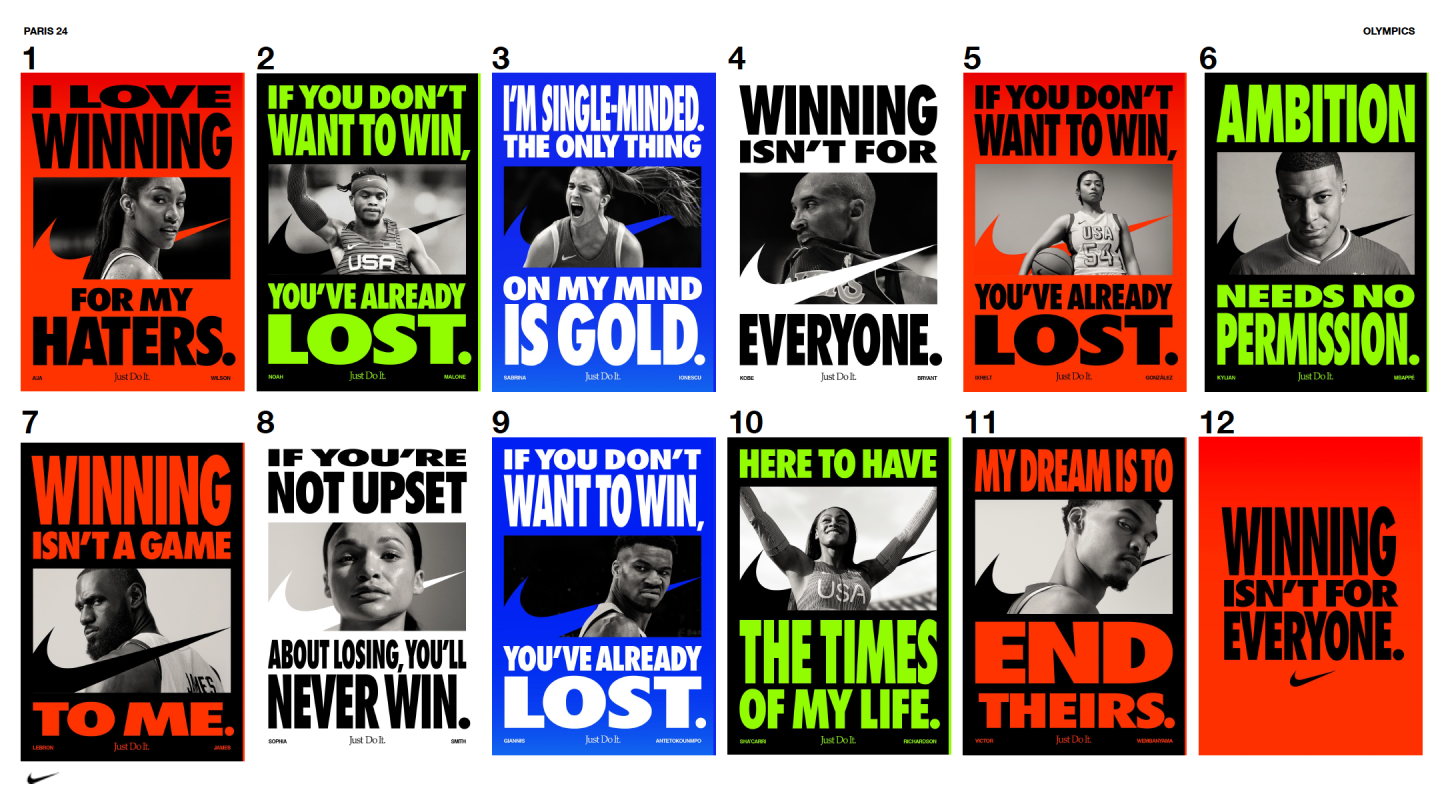
11. Red Bull – Anamorphic 3D “Gives You Wings” in Atlanta
Red Bull’s 3D billboard illusion in Atlanta created the effect of a massive can bursting out of the screen. The energy drink that claims to “give you wings” took that slogan literally with an eye-popping 3D digital billboard in Atlanta. Red Bull used an anamorphic illusion on a high-resolution LED screen (courtesy of Orange Barrel Media) to make it appear as if a giant Red Bull can—and splashy graphics—were leaping into real life. From the perfect viewing angle, pedestrians saw a lively 3D scene of Red Bull imagery breaking the boundary of the screen.
Why it’s notable: It’s a prime example of out-of-home advertising designed for the
Instagram/TikTok era. The campaign aimed to
quickly captivate viewers and encourage
sharing on social media. And it worked: 3D billboard videos are always a hit, and Red Bull’s energetic content was widely shared, expanding its reach well beyond Atlanta. This campaign shows how brands can use 3D digital out-of-home to generate buzz—in fact,
58% of consumers say they’d share anamorphic
billboards on social media, according to OUTFRONT research. Red Bull’s dive into 3D OOH not only gave people a thrill in person but also boosted the brand’s innovative image online.
12. Artisan (AI Startup) – “Stop Hiring Humans” Billboards
Here’s a campaign that literally made people angry – and that was exactly the plan. Artisan, a small AI startup, caused a stir with blunt billboards in San Francisco and New York that read: “Stop Hiring Humans.” The deliberately provocative ads (featuring images of AI robots) were essentially rage-bait to promote Artisan’s AI sales agent software. The stunt worked too well: photos of the billboards went viral on X/Twitter and Reddit, sparking outrage and debate about AI’s threat to jobs. Artisan leaned into the controversy on social media, further fanning the flames.
Why it’s notable: Love it or hate it, this campaign generated
tens of millions of impressions and plenty of free media coverage. The startup credited the billboards with helping them achieve their
biggest growth
months ever – over
$2 million in new revenue – as curious companies explored their AI “employees”. It’s a strong reminder that in the attention economy,
controversy can convert. By breaking away from the typical norms of B2B advertising, Artisan’s darkly funny message stood out from the noise (and yes, they did receive
thousands of death threats along with leads!). Provocation isn’t for every brand – but for this scrappy AI company, the high-risk approach brought high rewards in awareness.
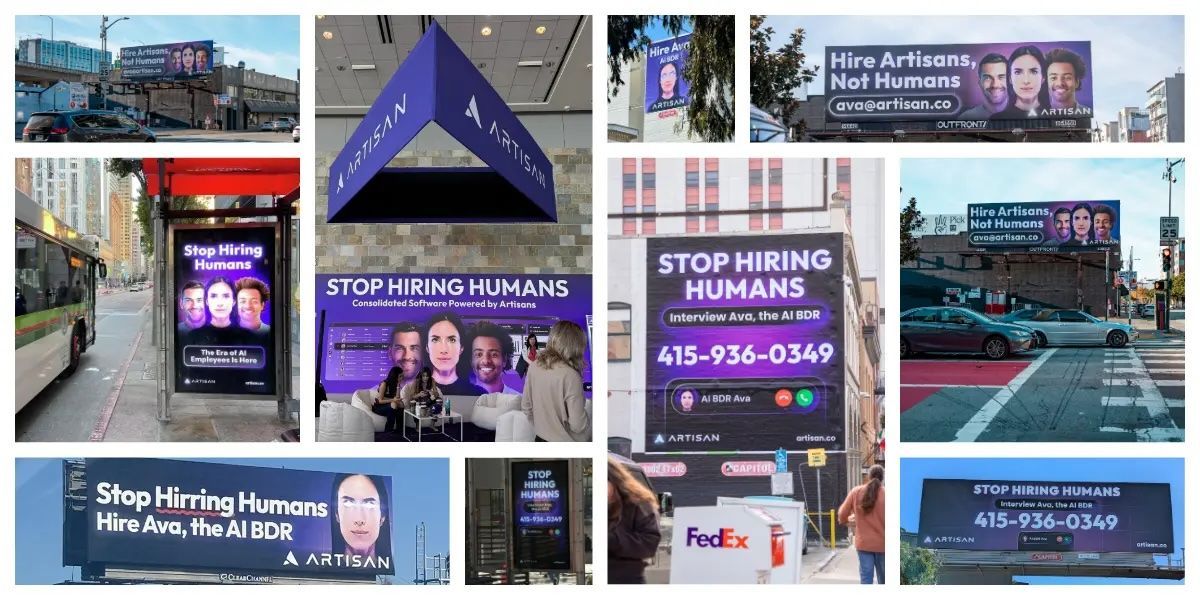
13. Atlantic Records – Charli XCX’s “The Brat Wall” Live Mural
Pop star Charli XCX transformed a Brooklyn street corner into the epicenter of the music world with her “Brat Wall” campaign. In May 2024, Atlantic Records and Colossal Media launched Charli’s album by live-streaming the creation of a huge lime-green mural (called the Brat Wall) in Williamsburg. As fans gathered both in person and online, Charli herself surprising everyone with a live performance in front of the half-finished mural—sending her “Angels” fanbase into a frenzy. Over the summer, the wall’s artwork was repeatedly updated with new lyrics and visuals as songs were released, turning it into a dynamic billboard for her album that fans checked obsessively.
Why it’s notable: This campaign
redefined OOH as both an
event and a social moment. It earned
OAAA’s
OOH Media Plan of the Year for its innovative blend of outdoor advertising, social media, and live activation. The initial livestream and pop-up show attracted millions of views and likes (Charli’s TikTok of the wall received over 12 million views). By making a billboard mural the focal point of an album launch, Charli XCX demonstrated how outdoor media can serve as the heartbeat of a multi-channel campaign. The Brat Wall blurred the lines between advertising and fan art, and for months,
“BRAT Wall
4EVER” truly felt like a staple in NYC’s music scene.
@colossalmedia What’d you do last week Thursday? Us: Painted a bright green mural in BK. Them: Watched paint dry and saw @Charli XCX live! Brat Wall 4 Ever. #alwayshandpaint #colossalmedia #colossalbts #bratwall #charlixcx #brooklyn #handpaint #walldog #muralart #muraladvertising #ooh #modernmichelangelo @Charli XCX @Charli XCX ♬ original sound - Colossal Media
14. McDonald’s – Times Square Fry Countdown on New Year’s Eve
Leave it to McDonald’s to craft a fun twist on the New Year’s Eve countdown. McDonald's entertained the cold crowds in Times Square with a “Fry Countdown” on its giant billboard. At 10 hours before midnight, the digital display showed a stack of over 600 French fries—one for each remaining minute of the year. With each passing minute, a fry was removed from the pile. The playful idea: just as the Times Square ball drops, so do the fries! To keep the crowd engaged, McDonald’s also featured other entertaining content, like fry-themed trivia and animations, during the long wait.
Why it’s notable: This example showcases contextual, real-time content on a billboard. Instead of a static ad, McDonald’s crafted an experience that aligned with the audience’s situation (bored, cold people waiting for midnight). The Fry Countdown provided entertainment and subtly kept McDonald’s top-of-mind as midnight snack cravings grew. Now in its second year, the campaign shows how billboards can be used in a playful “second screen” manner during live events. Additionally, social media loved it – pictures and videos of the ticking fries received many shares, proving that even a French fry can become a social media star with the right creative approach.
15. LiveOnNY – The Heartless “I ❤ NY” Organ Donor Appeal
Sometimes a simple tweak to a famous image can send a powerful message. That’s what organ donation nonprofit LiveOnNY achieved with its impactful out-of-home (OOH) campaign that literally took the heart out of “I ❤ NY.” The posters and subway ads displayed the iconic I ❤️ NY logo— but without the heart symbol—alongside copy explaining that “New York needs organ donors.” In smaller text, it encouraged viewers to help fill that heart-shaped void by registering as organ donor heroes.
Why it’s notable: This creative PSA cleverly leveraged an instantly recognizable slogan, flipping it to deliver a serious message. The missing red heart made New Yorkers pause, prompting a double-take—and hopefully, action. It’s a classic example of less-is-more in design: one simple removal conveyed a profound message about lives waiting to be saved. The campaign was praised for its ingenuity and even made headlines in marketing circles as a
“brilliant organ donation ad.” More importantly, LiveOnNY reported an increase in donor sign-ups following the awareness effort. By highlighting what’s
absent, the ad helped viewers feel the emotional weight of the issue—a powerful example of out-of-home advertising used for good.
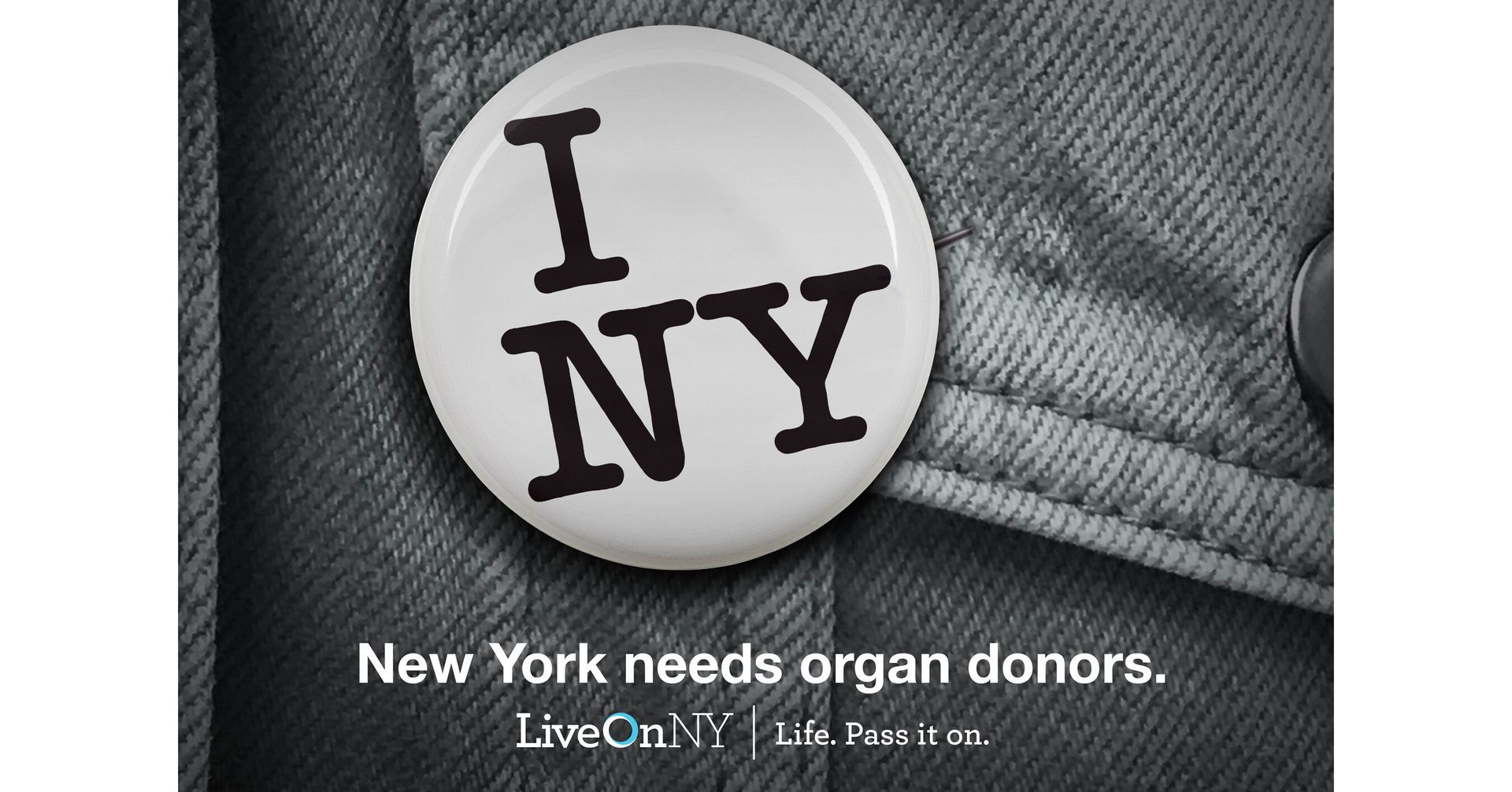
16. ZipRecruiter – “Right Person for the Job” Election Spoof
During election season, most brands shy away from political topics, but job site ZipRecruiter saw an opportunity. They launched an election-themed billboard campaign that played on the classic phrase “the right person for the job,” treating the hiring of employees with the same seriousness (and graphics) as electing a candidate. Billboards resembled political campaign posters, urging companies to “elect” better hires using ZipRecruiter’s matching technology. Some ads even staged fake debates between candidates named “Old Hiring Ways” and “Smart Hiring (ZipRecruiter).”
Why it’s notable: It was a
bold, timely move that capitalized on election fever, making a B2B service feel culturally relevant. While many brands avoid election-related content, ZipRecruiter’s creative was tongue-in-cheek and
brand-safe—reframing a typically dry value prop (efficient hiring) into a seasonal talking point. The campaign stood out amid the political billboard clutter, grabbing attention with its clever copy and patriotic visuals. By
meeting the moment (in this case, a busy political season) with a twist, ZipRecruiter made job recruiters chuckle and remember its name when they had roles to fill. Chalk it up as a vote in favor of bold, creative risk-taking.
17. Hellmann’s – “Imitation Mayonnaise” Truth in Advertising
Mayonnaise might not shout “creative marketing,” but Hellmann’s found a way to make its condiment talk spicy. In its “Imitation Jar” campaign (called “The Imitation Never Tastes Like The Original”), Hellmann’s filled billboards with 20 lookalike jars – all representing competing mayo brands that mimic Hellmann’s iconic packaging. The huge display of nearly identical blue-and-yellow jars (with deliberately spoofed labels) made it hard to spot the real Hellmann’s at first glance. The key point: the tagline reminded viewers that while the shelf is packed with imitators, “there’s only one true classic” – Hellmann’s itself. Notably, the ad didn’t even display the Hellmann’s logo prominently, trusting consumers to understand the joke.
Why it’s notable: This OOH campaign captured attention through visual trickery. By boldly displaying competitors (a risky choice), Hellmann’s actually strengthened its own dominance – a classic example of “negative space” marketing where the absence of the brand becomes the story. It turned heads among grocery shoppers and received praise in ad media for its confidence. The campaign also earned a 2024 OBIE award in its category, demonstrating that sometimes “out of the jar” thinking in a low-interest category can produce high-impact results. After all, what better way to demonstrate you’re the best than by literally overshadowing everything else?
18. Netflix – Stranger Things Upside Down AR Billboards
How do you promote a spooky sci-fi show in a way that feels truly immersive? For Stranger Things, Netflix used creepy augmented reality billboards that looked like portals to the Upside Down appearing in city streets. When seen through a smartphone, these AR billboards displayed Demogorgons and other creatures emerging from swirling interdimensional rifts around the show's poster. Fans could watch (and record) the monsters seemingly invade the real world.
Why it’s notable: The AR billboards turned passive viewers into active participants – people weren’t just watching an ad, they were experiencing a Stranger Things moment firsthand. The campaign’s engagement rate was extremely high (Netflix reported 45% higher engagement compared to traditional static ads in previous seasons). Social media was flooded with user-generated videos of the billboard monsters, creating FOMO for those who hadn’t seen one in person. By merging tech and storytelling, Netflix transformed outdoor advertising into an extension of its content universe – a trendsetting move that had both marketing pros and fans excited about the future of AR in entertainment promotion.
19. Universal Pictures – Jurassic World’s Escaping Dinosaurs
In another impressive example of AR, Universal brought dinosaurs to city streets for Jurassic World: Dominion. Some digital billboards showed a T. rex “breaking out” of the display, but the real magic happened through AR: viewers who scanned a code could see giant dinosaurs roaming through the skyline overlaid on their phone cameras. Imagine standing in Times Square and seeing a life-sized velociraptor sprint past taxis – that’s the thrill this campaign delivered. People could film the AR dinosaurs roaming real streets and share the videos, blurring fiction and reality.
Why it’s notable: It generated a viral spectacle. The campaign amassed over 15 million social views as people marveled at others’ AR dino encounters. More concretely, markets with the AR billboards saw a 22% increase in advance ticket sales for the movie. By transforming billboards into blockbuster set pieces, Universal reminded everyone that movie marketing can be an adventure in itself. This AR activation tapped into our inner kid’s dream (or nightmare) of experiencing a Jurassic Park world – and demonstrated that out-of-home advertising can evoke the same awe and excitement usually associated with the big screen.
20. Marvel Studios – Avengers: Endgame Team-Up AR Billboard
Even in 2019, with the release of Endgame, Marvel was pioneering AR billboards—and the concept still felt innovative through 2025. For the culmination of the Avengers saga, Marvel Studios launched interactive billboards that allowed fans to “join the Avengers” via augmented reality. By scanning the sign, people saw themselves on their phones standing alongside Iron Man, Captain America, and others, as if they were part of the superhero team. Many quickly snapped selfies “with” their favorite heroes.
Why it’s notable: This campaign transformed an ad into a
personalized fan experience. It generated over
2.5 million social impressions as fans shared their AR Avengers selfies. More importantly, it boosted already high anticipation—helping contribute to Endgame’s record-breaking opening weekend by creating excitement in an innovative way. It’s a prime example of how AR can strengthen emotional bonds: fans weren’t just watching the Avengers, they
were Avengers (for a minute or two). As AR billboards become more common, Marvel’s success shows that engaging content and shareability are essential. This campaign also predicted the mainstream adoption of AR in entertainment marketing, which has continued to grow through 2025.
21. Apple – “Cinemasterpiece” iPhone 16 Pro in NYC
Even with all the high-tech displays around, a classic big, bold Apple billboard can still catch eyes. In mid-2025, Apple occupied a prominent NYC skyline spot (near Penn Station) with a large static billboard for the iPhone 16 Pro, calling the phone a “Cinemasterpiece.” The ad was strikingly minimalist yet dramatic: a huge close-up of the iPhone 16 Pro’s new triple-lens camera system, set against a black background, with that single coined word Cinemasterpiece in bold. At night, the billboard was brightly backlit, making the lenses shine over city traffic.
Why it’s notable: In an era dominated by flashy 3D and AR, Apple demonstrated that static OOH can still grab attention when done effectively. The bold size and simple design of the ad reinforced Apple’s message that the iPhone 16 Pro isn’t just a phone – it’s a cinematic tool. Strategic placement and lighting turned it into an unavoidable eye-catcher for millions of commuters and a popular background in countless tourist photos. Apple’s campaign, created in partnership with Lamar Advertising and AT&T, highlighted that high-visibility billboards remain a “prestige launch” strategy for leading brands. The buzz surrounding the iPhone 16 Pro’s camera (already sparked by the billboard’s tagline) translated into genuine interest and increased traffic at Apple Stores. Sometimes, an impressive billboard is just what a product launch needs to make a final statement.
22. H&M – Charli XCX Times Square Takeover Concert
Who says brick-and-mortar retail is dead? Fashion retailer H&M pulled off an experiential out-of-home (OOH) extravaganza in November 2024 that carried over into 2025. To celebrate the reopening of its Times Square flagship, H&M staged a surprise pop-up concert by pop star Charli XCX – announced only 30 minutes beforehand on social media. Thousands of fans flocked to Times Square, where H&M coordinated a synchronized billboard takeover: every giant screen in Times Square displayed visuals counting down to the event and then livestreamed the performance. The result was an outdoor mini-festival, with H&M’s branding integrated throughout the dazzling display of music, fashion, and digital content.
Why it’s notable: This campaign showcased OOH as a live event platform. By utilizing the spectacle of Times Square’s billboards and blending it with an in-person event, H&M created an immersive, city-wide experience that grabbed everyone’s attention. The social media reach was massive—videos of the surprise Charli XCX show (and the erupting billboards) went viral worldwide. Significantly, H&M linked it to business goals: it marked the grand reopening of their store, and the excitement drove significant foot traffic and media coverage. The stunt demonstrated how even in the digital age, physical experiences enhanced by OOH can deeply engage urban audiences. H&M transformed Times Square into its own theater for one night, earning praise from marketers for its innovative approach.
23. Heinz (Kraft) – Ore-Ida’s Rain-Activated “Forecast” Mural
Seattle residents are accustomed to gray, drizzly days, but one clever mural offered a sunny surprise whenever it rained. Ore-Ida (Kraft Heinz’s frozen fries brand) commissioned a large hand-painted wall at Pike Place Market with a hidden message that only appears when wet. On dry days, the mural simply read: “Our fries will be crispy and fluffy every time.” But when rain fell, special hydro-activated paint revealed additional text: “As sure as it rains in Seattle.” In other words, Ore-Ida’s fry quality is as dependable as Seattle’s weather.
Why it’s notable: This “Deliciously Predictable” mural transformed a natural event (rain) into a marketing reveal. It charmingly engaged passersby—people actually looked forward to rain to see the ad change, and crowds would watch the words appear like magic. The novelty garnered extensive local news and social media attention, with Seattleites praising the brand’s clever nod to their climate. For the OOH industry, the campaign pushed creative limits: rain-activated billboard paint was almost unheard of before. The project’s success (it won a Bronze OBIE for Contextual OOH) has prompted other advertisers to consider weather-reactive ads. By blending engineering with creativity, Ore-Ida delivered a memorable, buzzworthy billboard that literally made a splash.
24. AR Takes Over: From Ferris Wheels to Dragons
2025 solidified augmented reality as a primary tool in OOH campaigns—especially in entertainment. We’ve already seen several successes (Stranger Things, Jurassic World, etc.), but it’s worth highlighting the broader AR billboard trend. For instance, CBS’s Wheel of Fortune created a pop-up AR “Ferris Wheel of Fortune” that appeared to spin above a street, allowing users to virtually “play” a wheel-spin game on their phones (a concept that won a Silver OBIE). On HBO’s side, a Game of Thrones promotion brought dragons to AR billboards, so when viewed through Snapchat, a dragon would land on a building and roar—thrilling fans ahead of the prequel series launch. Even retailers got involved: Chanel added AR to bus shelter posters in Chicago, letting customers see a 3D perfume bottle and interact with a mini light show on their screens.
Why it’s notable: AR-enhanced billboards bridge the gap between physical and digital engagement. Industry data shows AR campaigns can increase dwell time from just a few seconds to over a minute on average. In 2025, we saw AR shift from being a novelty to becoming mainstream in OOH – nearly every big movie or game featured some AR tie-in billboard in major cities. This trend is expanding OOH’s creative possibilities and attracting younger, tech-savvy audiences who enjoy interactive experiences. As 5G and WebAR technology improve, we can expect even more impressive AR billboards (possibly with less app friction) in the years ahead, transforming outdoor ads from just being seen to being played.
25. Spotify – 2024 Wrapped “Billboarded”
Leave it to Spotify to turn user data into a marketing celebration each year. The streaming giant’s annual “Wrapped” campaign (which launched in Dec 2024) once again showcased personalized listening stats and quirky music trends across billboards and social media worldwide. In the U.S., Spotify displayed playful OOH ads highlighting fun insights – like how Taylor Swift was the most-streamed artist of 2024 (no surprise there, with 26.6 billion streams), or humorous remarks such as “Dear person who played ‘Leave The Door Open’ 1000 times, we’re not judging, but are you okay?” These ads appeared in busy cities and on transit shelters, seamlessly blending into social media as users shared their own Wrapped results.
Why it’s notable: Spotify’s out-of-home (OOH) advertising is a key extension of a mass social media moment. By displaying global and local listening trends on billboards, they foster a sense of community (e.g., “NYC’s Top Podcasts of 2024” in Times Square). The campaign sparks FOMO and discussion—it’s made to be screenshotted and shared. In 2024, Spotify marked a decade of Wrapped with its “biggest Wrapped yet” across more countries than before, showing that this blend of personal data and public display appeals broadly. It highlights the power of combining user-generated content with OOH: every billboard feels like a shout-out or an inside joke for fans of an artist or genre. In short, Wrapped’s billboards in 2025 weren’t just selling a product—they were celebrating the fun of music fandom, turning stats into stories. And given the chatter each year, it’s clearly an MVP (Most Valuable Playlist) for Spotify’s brand.
From anamorphic illusions to AR interactions and nostalgic throwbacks, 2025’s top billboard campaigns showed that OOH advertising is more alive, creative, and relevant than ever. These campaigns didn’t just advertise products – they told stories, sparked conversations, and in many cases invited the audience to be part of the action. The best part for marketers? A well-executed billboard has a multiplier effect: it earns media coverage, social shares, and cultural impact far beyond its physical location. As we head into 2026, one thing’s clear – the bar for out-of-home creativity has been set sky high, and we can’t wait to see where it goes next.
TALK TO A PRO
We're here to bring your brand to life!
Stay Connected with BrandXR
Create Augmented Reality for Free!
Create, Publish, and Measure 3D Augmented Reality Experiences Without Having to Code.
